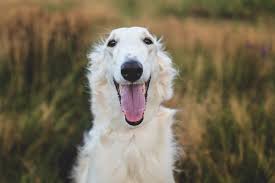The Borzoi breed history tells of aristocracy, art and sport — all blended in a rich, royal breed. The Borzoi, tall and elegant, is magnificent and enigmatic, noted often for its flowing coat, thin nose, and often short tail of most other hounds. In this article, we will discuss ten fascinating Borzoi breed history facts to point out the breed’s original roots, cultural value and the canine scene in general.
1. It was preferred by the Russian nobility
Borzoi, commonly called the Russian Wolfhound, were raised nevertheless by Russian nobles in the 17th century. Nobles wanted a fast robust dog capable of hunting wolves over long distances. These dogs became the emblems of riches and rank, instead of useful hunters; they tended to be bred and kept only by kings and nobles.
2. It has Roots in Old Hounds
Despite being mostly from Russia, the Borzoi may have descended from ancient sighthounds of ancient Persia. Probably the Russian breeders polished these features until we have a dog fit for the demanding hunting situations in that nation.
3. They Have The Wolf Hunting Authority
Borzoi breed history revolves mostly around their hunting of Wolves. Russian nobility would assemble with hundreds of their Borzoi wandering around in groups for great hunting. The Borzoi was designed from the ground up to be (and to stay) a wolf hunting and catching machine, which required not only a massive amount of speed and strength, but also good coordination and intellect.

Image courtesy: https://www.akc.org/expert-advice/lifestyle/8-fun-facts-about-the-borzoi/
4. Mark of Russian Art and Culture
The Borzoi have profoundly altered Russian art and the life of Russian society. Russian artists and sculptors sometimes showed Borzoi in their works, joined with beauty and dignity.
5. Protected Breeding Methodologies
Rigorously bred early on to preserve breed integrity, Borzoi rules were strict. The breeding techniques were formally trained under the close watch of Russian nobles who further protected and maintained tight restriction of the breeding process and allowed only heated kennels permission to give birth with Borzoi.
6. The Breed Almost Disappeared
The 1917 Russian Revolution changed the history of Borzoi breed history considerably. During the revolution many aristocratic families were toppled and Borzoi were emblems of the past nobility. As a result, many Borzoi were murdered or abandoned so that their numbers depleted dramatically.

7. They Have Global Appreciation
Late 19th and early 20th century Borzoi were well known outside of Russia. Interestingly, the breed was taken with American and European royalty, Grand Duke Nicholas of Russia and Queen Victoria of the United Kingdom among them. When the breed became popular abroad, the American Kennel Club (AKC) recognized Borzoi in 1891.
8. The “Russian Wolfhound.”
Originally called the Russian Wolfhound, the breed more than tidily reflected its Russian ancestry and wolf hunting beginnings. However, in 1936 the breed’s official name was changed to “Borzoi” — from the Russian word ‘borzyi,’ meaning ‘swift.’ The resulting name change usually signified a change of function in the breed, from hunting dog to companion animal, in many places of the globe.
9. They are Noted in Hollywood
In the early 20th century the Borzoi had starring roles in several Hollywood films. Which, when it comes to movies, is particularly good to have because its refined look and graceful motions are suitable, in particular, for use in movies when the scenario calls for the species to be fancy and aristocratic or majestic.
10. Borzoi Modern-Day
Today the Borzoi is loved as a friend for its modest behavior and elegant manner. Though they are no longer wolf hunters, Borzoi are honored for their great speed and agility. Borzoi sighthound instincts are often put to use in such canine activities as lure coursing, where dogs chase other dogs or objects on a line or through mechanical devices.
